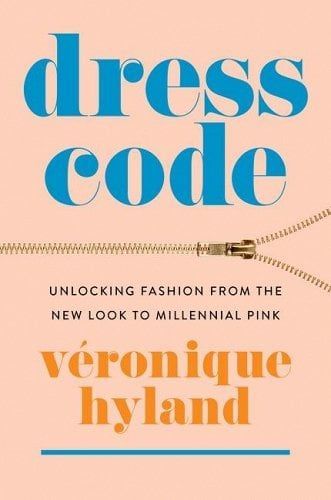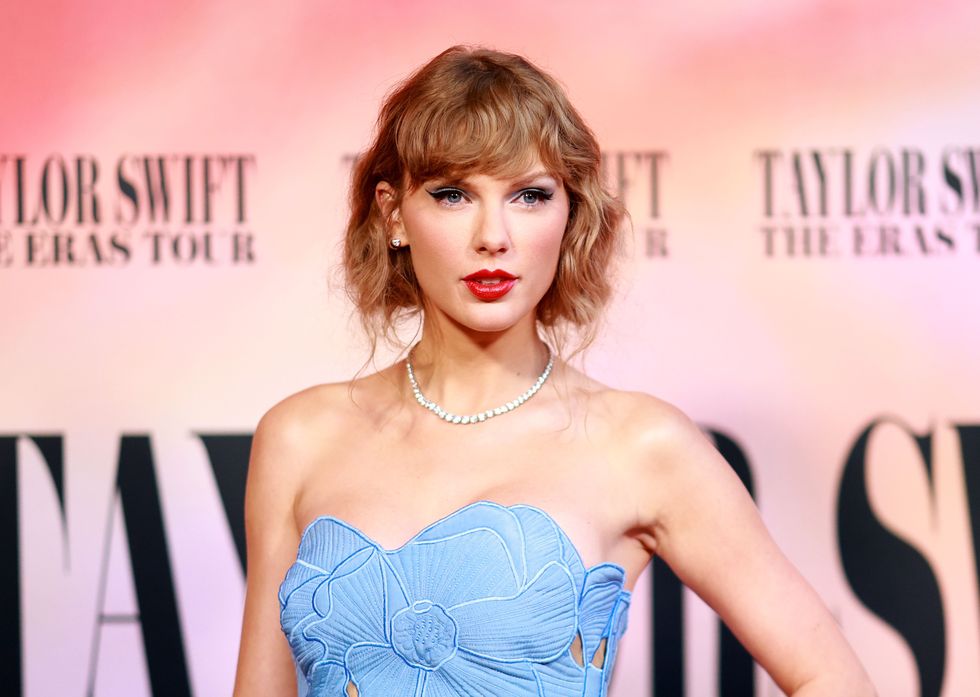Where Clara Bow Ends and Taylor Swift Begins
When the track list for Taylor Swift’s new album The Tortured Poets Department was announced, the song title that first caught my eye was not “But Daddy, I Love Him” or even “Fresh Out the Slammer.” It was a name that I have spent much of the last few years thinking about: Clara Bow.
Bow is one of the central figures in Chapter 7 of my book, Dress Code, in which I delve into the concept of “It” girls. Bow, of course, was the original owner of the mantle: After starring in the film adaptation of Elinor Glynn’s scandalous novel It, she became synonymous with the concept. “What is this quivering—pulsating—throbbing—beating—palpitating IT?” asked a Photoplay story on Bow. Glynn herself defined the concept as a kind of ineffable charisma. With “It,” she said, “You win all men if you are a woman—and all women if you are a man.” Fans started writing Bow letters addressed only to “Miss It, California.”
Like Swift, Bow became famous as a teenager; in a storyline that could have been plucked from one of her own movies, she won a talent contest that delivered her from her scrappy Brooklyn upbringing to Hollywood. Even before It, her “It” factor was evident. Motion Picture Classic magazine declared that “[she] shows alarming symptoms of becoming the sensation of the year,” though Bow tearfully confessed in the story that “by the time I’m ready to be a great star I’ll have been on the screen such a long time that everybody will be tired of seeing me.” (Will you still want me when I’m nothing new?)
As with many “It” girls (like her successors Jean Seberg and Edie Sedgwick) we remember Bow’s style over her substance. As I examine in Dress Code, we’ve flattened these women into their aesthetics, while their more complex life stories live on history’s cutting-room floor. On Pinterest, Bow lives forever as an apparition of flapper style: curly bob, plucked eyebrows, cupid’s-bow mouth. (Some fans think Swift paid tribute to her style with her Schiaparelli look at this year’s Grammys, complete with a choker and pearl necklaces similar to ones Bow once wore, and the ’20s vamp makeup look in her upcoming video for the single “Fortnight”,) But before the Tortured Poets announcement, you weren’t likely to hear her name outside of a silent film festival or the show notes for a flapper-inspired runway collection.
Though she and Swift are worlds and decades apart, I can imagine the way Bow’s life story might have appealed to the star. Her arc wasn’t that different from that of many women in the media today: She was held up as an ideal, declared “It,” then unceremoniously discarded, a theme Swift has touched on in songs like “Nothing New” and “The Lucky One.” (When playing the latter track live recently, she introduced it as a song “about how horrible being famous is.”)
“All your life, did you know/You’d be picked like a rose?” Swift sings on the track, evoking both being chosen, plucked from obscurity, and seeing your life ending. She captures the highs of fame: “You’re the new god we’re worshipping/Promise to be dazzling,” and the tradeoffs: “Beauty is a beast that roars down on all fours demanding more…It’s hell on earth to be heavenly.” She even references her own star persona, perhaps telling a potential successor: “You look like Taylor Swift in this light, we’re loving it/You’ve got edge she never did.”
In her Time Person of the Year cover story, Swift alluded to her own ups and downs. “I’ve been raised up and down the flagpole of public opinion so many times in the last 20 years,” she said. “I’ve been given a tiara, then had it taken away.” (The crown is stained, but you’re the real queen.)
The parallels don’t end there. Bow’s romantic life was picked over by the media and she was dogged by cruel rumors, eventually leading the studio to cancel her contract; Swift has lamented becoming “a national lightning rod for slut-shaming” in her 20s. By 28, Bow had retired. In her documentary Miss Americana, filmed when Swift was around the same age, she openly fretted about how “we…exist in this society where women in entertainment are discarded in an elephant graveyard by the time they’re 35,” and said that as she approached her 30s, “I want to work really hard while society is still tolerating me being successful.”
Misogyny hasn’t left the building, it’s just assumed new disguises, cropping up in TikTok comments instead of movie-magazine headlines. In her 2019 cover story for ELLE, framed around the 30 things she’d learned before turning 30, Swift wrote: “I’ve learned that society is constantly sending very loud messages to women that exhibiting the physical signs of aging is the worst thing that can happen to us,” and decried the double standard behind “this bizarre goal of everlasting youth that isn’t even remotely required of men.” (And all the young things line up to take your place.)
Finally, Bow was beholden to the studio system in the same way modern-day pop stars are to their labels. Bow called the movie studios “factories” and resented being subject to their intense workload and throttled by their codes of conduct. Swift broke out by re-recording her albums and re-claiming her work, re-writing her story in a way Bow was never able to do.
When I wrote about Clara Bow, I never expected her to have this kind of resurgence in the (less roaring, thus far) 2020s. But here she is popping up everywhere: as the loose inspiration for Margot Robbie’s character in Babylon, in an Omaha parking lot where a collector discovered her film The Pill Popper, thought to be lost forever, and now in Swift’s new album. A Variety review of one of her films said, “Clara Bow lingers in the eye, long after the picture has gone.” And in a third-act twist, she’s getting an extended life.





